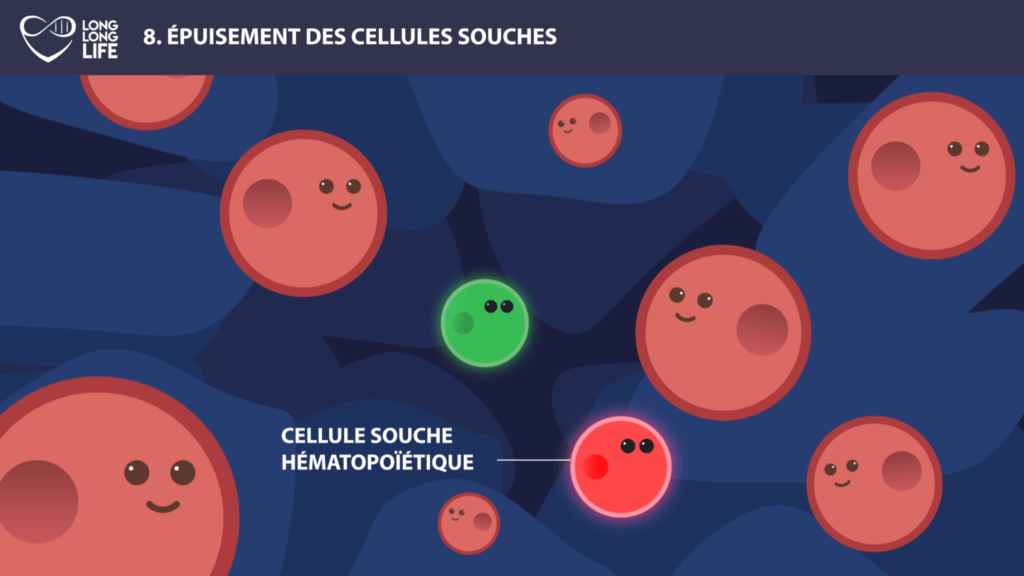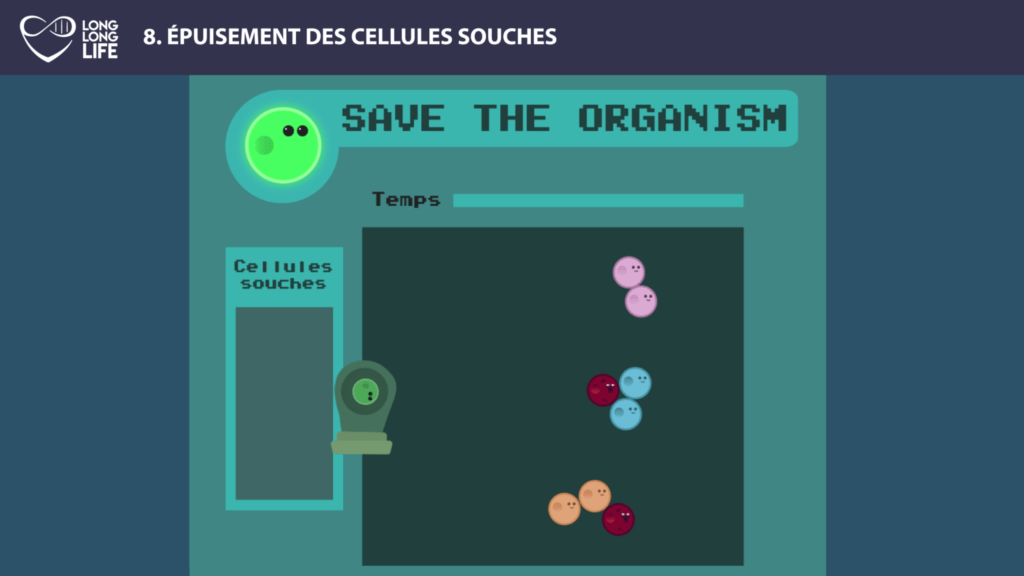Part 8: The 9 causes of aging - The exhaustion of our stem cells

It is now time to address the eighth identified cause of aging: the exhaustion of our stem cells. Do not hesitate to consult the other causes presented previously right here !
Stem cells: definition
Stem cells are undifferentiated or incompletely differentiated cells, that is, they do not belong to a particular organ. They are capable of generating specialized cells for a particular organ through cellular differentiation. This mechanism allows them to acquire the characteristics specific to a cell type. Stem cells from an adult human cannot produce just any type of cell. For example, our blood cells, like red blood cells or platelets, come from the same undifferentiated cells: hematopoietic stem cells . These stem cells are capable of producing blood cells, but will not be able to produce other specific cells such as those of muscle, or neurons...

Stem cells allow the renewal of the cells of an organ, they are stored in the body and are used when a need for cells arises: certain cells age, die regularly and must be replaced, such as red blood cells whose Average lifespan is 120 days. Other organs may develop and require more tissue, such as the uterus which grows during pregnancy.
To go further, in certain animals, these cells allow the regeneration of a limb, as is the case in lizards. Conversely, certain organs do not contain stem cells and therefore cannot renew themselves in the event of damage. This is particularly the case for the heart and the pancreas, which explains the problem in the event of a heart attack or diabetes : these organs are not able to recover from the problem.
Stem cells and cell renewal
| Obviously, the stem cells themselves must be capable of renewing themselves. With aging, we observe that tissues have more difficulty regenerating. This is due, among other things, to the slowdown in cell divisions and the lack of replacement of stem cells. This behavior can be explained, according to current research, by the silent accumulation of damage in stem cells, particularly to their DNA. Moreover, although adult stem cells express telomerase, they are not immune to telomere shortening, this biological clock that we have already talked about (everything is linked). |
 |

These phenomena make stem cells progressively rarer and therefore increase the number of senescent cells present in a tissue, and this can lead to different problems depending on the organs affected, as we saw previously.
In addition to a slowdown in the production of stem cells, mutations in their DNA may appear, and can trigger cell death in certain stem cells, or on the contrary modify their genetic information while increasing their speed of replication or their resistance. This can notably have an impact on the increase in cancers with age.


Conclusion
In short, the exhaustion of stem cells is suspected of playing a decisive role in the aging of the organism, because it slows down cell renewal, this exhaustion of stem cells is thus an essential component in the aging process.
SOURCES:
Guilhem Velvé Casquillas on http://www.longlonglife.org/

